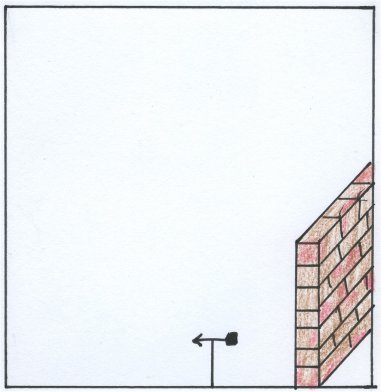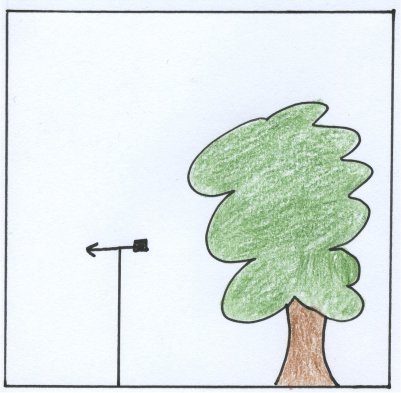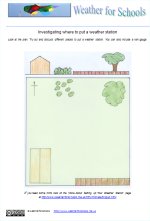More About Setting up Your Weather Station
Where you put your weather station is important. If you choose carefully you
will get the best data you can. Not all weather stations can be placed
in the perfect situation but you can do the best possible. If there
are some bad points about your weather station site, let people know
when you exchange data.
You location
may be chosen so that the weather instruments will be safe.
You will also need to put your weather vane somewhere where it can show the wind direction correctly. This needs to be as high up as possible, but you need to be able to see which way it is pointing. It also needs to be as far away from any obstacles as possible. Once again you can only do the best you can. When you put up your weather vane you will need to use a compass to decide where the north arm should point.
When you have finished reading about this you may want to return to the Setting up Your Weather Station page or the Basic Apparatus page. To see what sorts of weather boxes you can use look on the Weather Boxes page.
A Home-made Weather Station
See the links section to find out how to make a variety of weather stations. The video on the right shows an easy-to make weather box. It will just house one thermometer. This one is a Six's thermometer. Find out more about these on the Six's Thermometers page. These give good value as you get three readings; current, maximum and minimum temperatures. |
[No speech] |
Choosing Where to Put your Stevenson Screen or Weather Box
Look at these plan views and see what the good and bad points are. All of the
locations have short grass, which is correct for taking weather readings. The weather box and rain gauge have been placed together in these examples, but they do not have to be close, you may have a better location for the rain gauge.
In an ideal situation the rain gauge needs to be placed carefully. Work out the height of the nearest tall feature. Multiply this height by 2. This is the minimum distance the rain gauge should ideally be from that feature.
(Four times that height would be perfect.) Bear this in mind, but then just do your best to keep it away from anything that shelters it from rainfall.
The rim of the rain collector should be 30cm above the ground. This stops it from collecting splashes.
It would be interesting to have a couple of cheap rain gauges and compare the readings from different locations in the same weather.
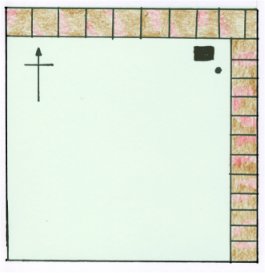 |
|
| - this is a fairly ideal location - make sure that the door opens to the north - you may want to put the rain gauge more in the centre of the remaining space. You don't want the weather station to shelter it. |
- these walls can store heat from the sun and later on can give off the heat. |
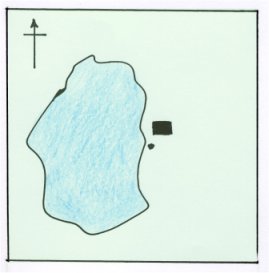 |
 |
| because it is next to a pond this station
might give higher humidity readings. - there are often plants round a pool, not short grass - put the weather station in the middle of the grassy space. Place the rain gauge in the middle of a clear space. |
- too close to the tree - it will be too shaded |
 |
|
| - if you have to put your weather station on a wall, do not put it on a south
facing wall. - when this weather station is opened the sun can shine on the instruments. - Remember you need the rain gauge in a clear space. |
- this site is too crowded with bushes |
Choosing Where to Put your Weather Vane
Look at these pictures and see what the good and bad points are.
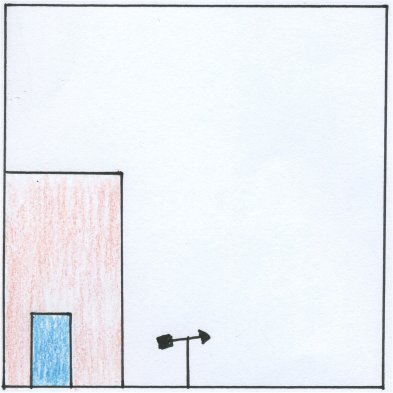 |
|
| - too close to the wall - it will show the
wrong direction - it is rather low down |
- too close to the building |
 |
|
| - the tree and the bush will stop some winds
from reaching the weather vane. - this is rather low |
|
 |
|
| - this weather vane is a little taller which
is good - the tree will shelter the weather vane and stop some winds from blowing on it |
- this is a fairly ideal location as nothing is stopping the wind or changing the direction of the wind |


